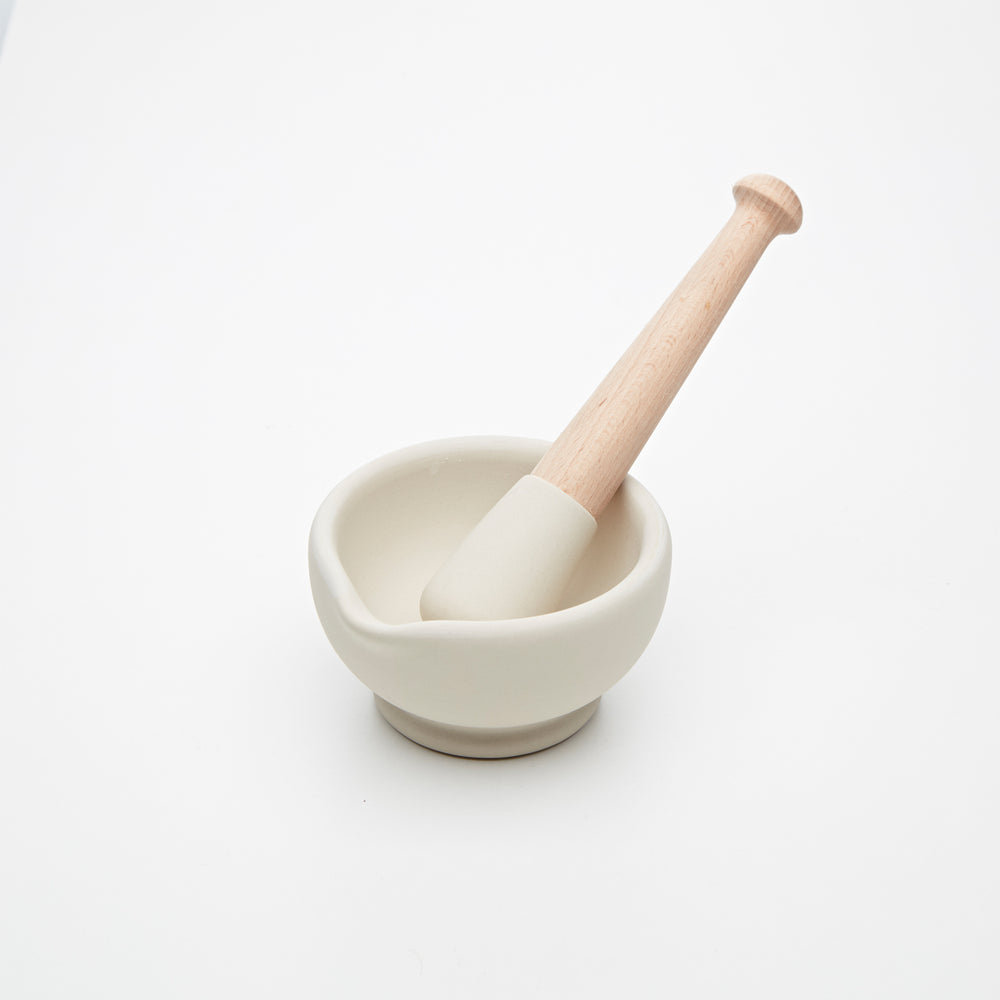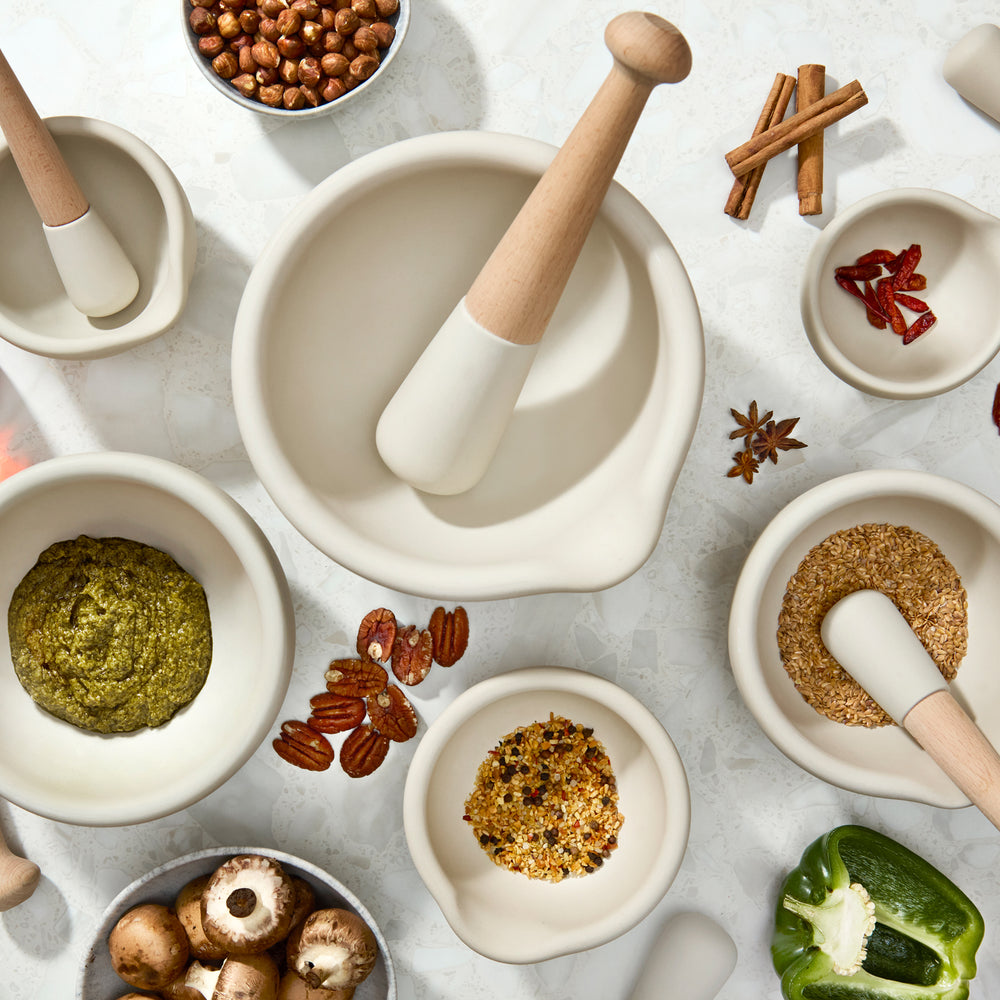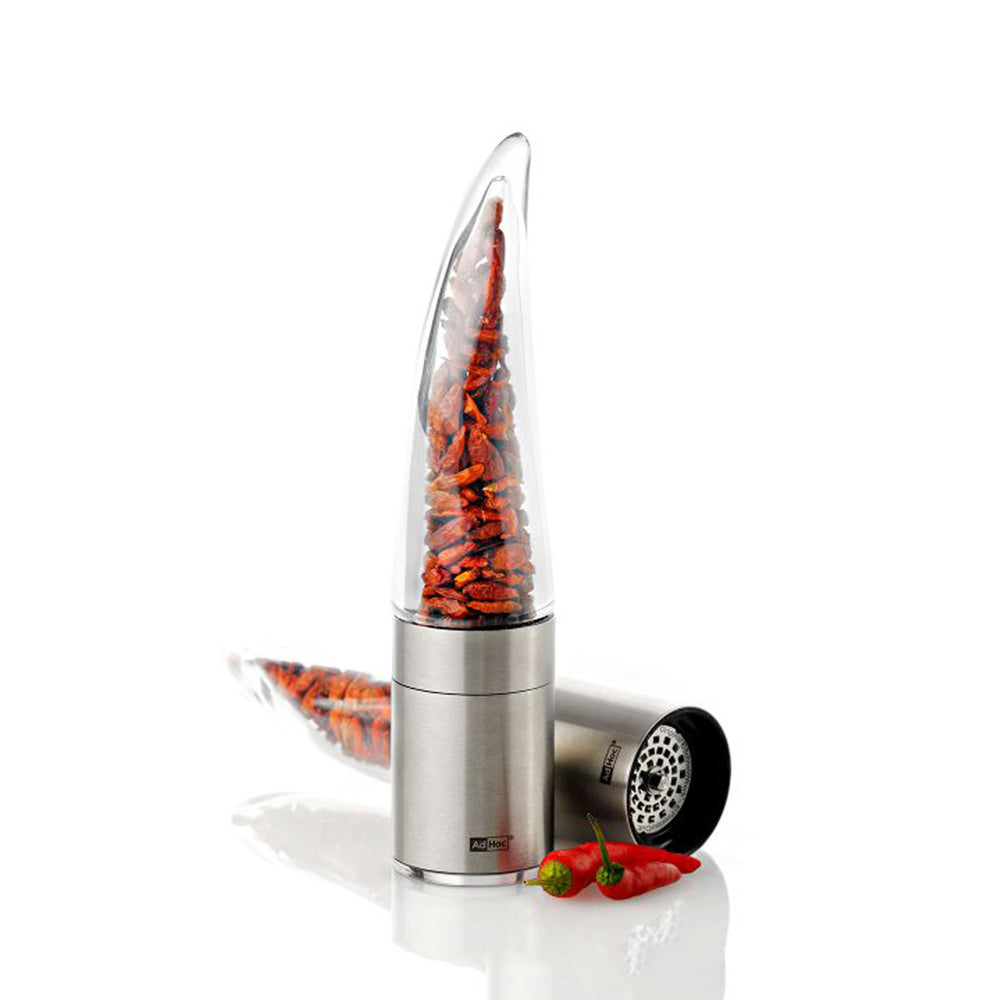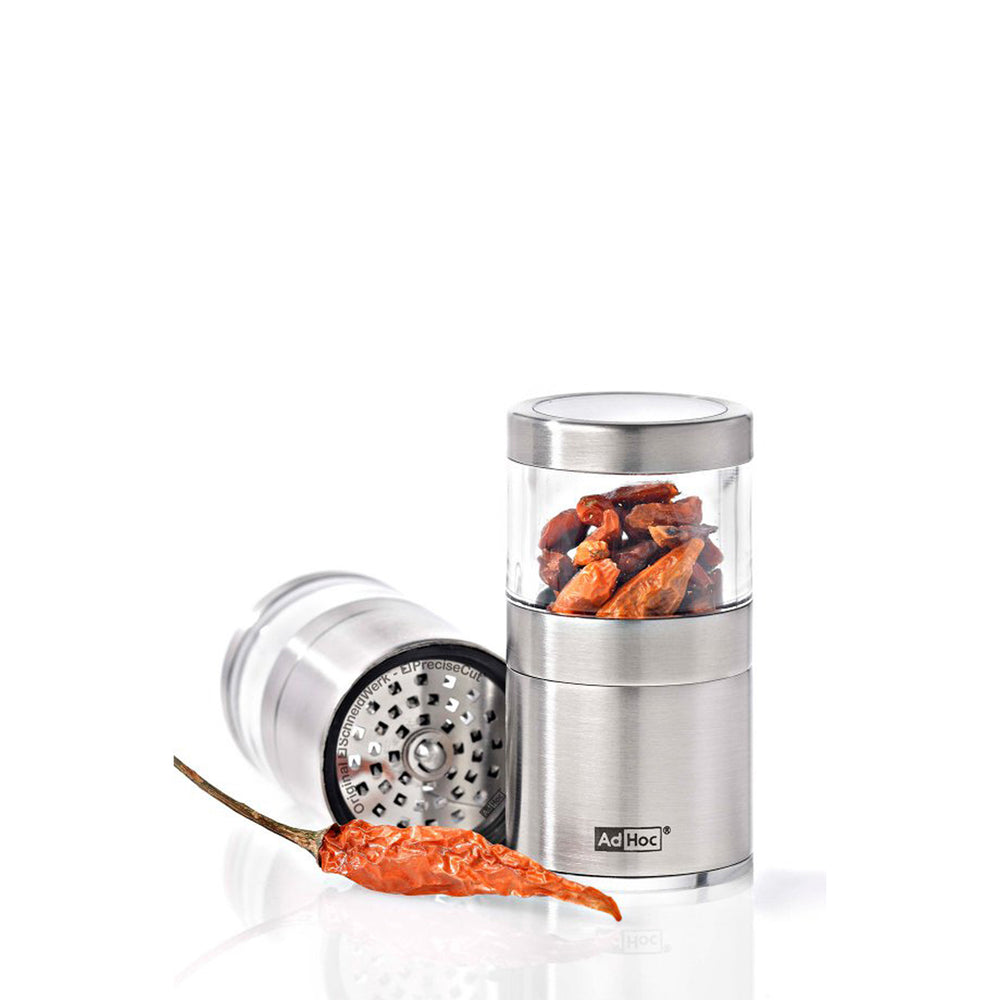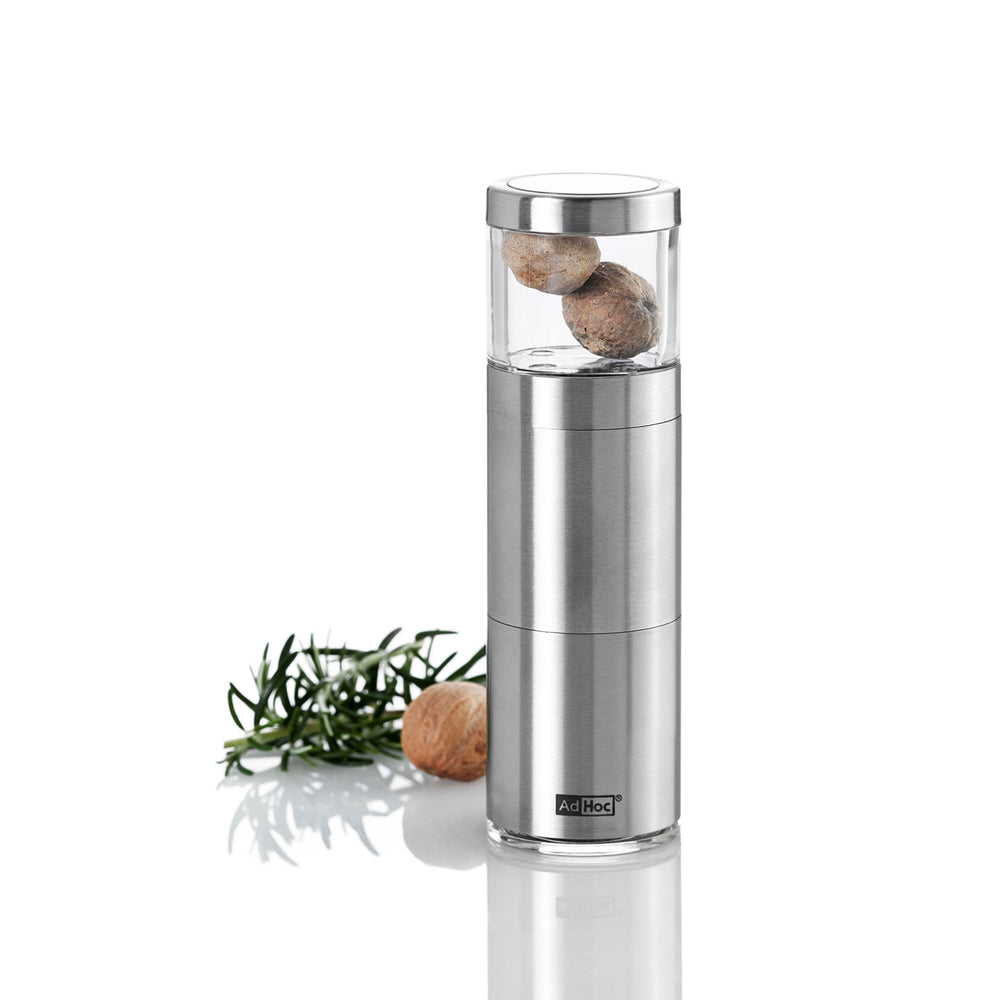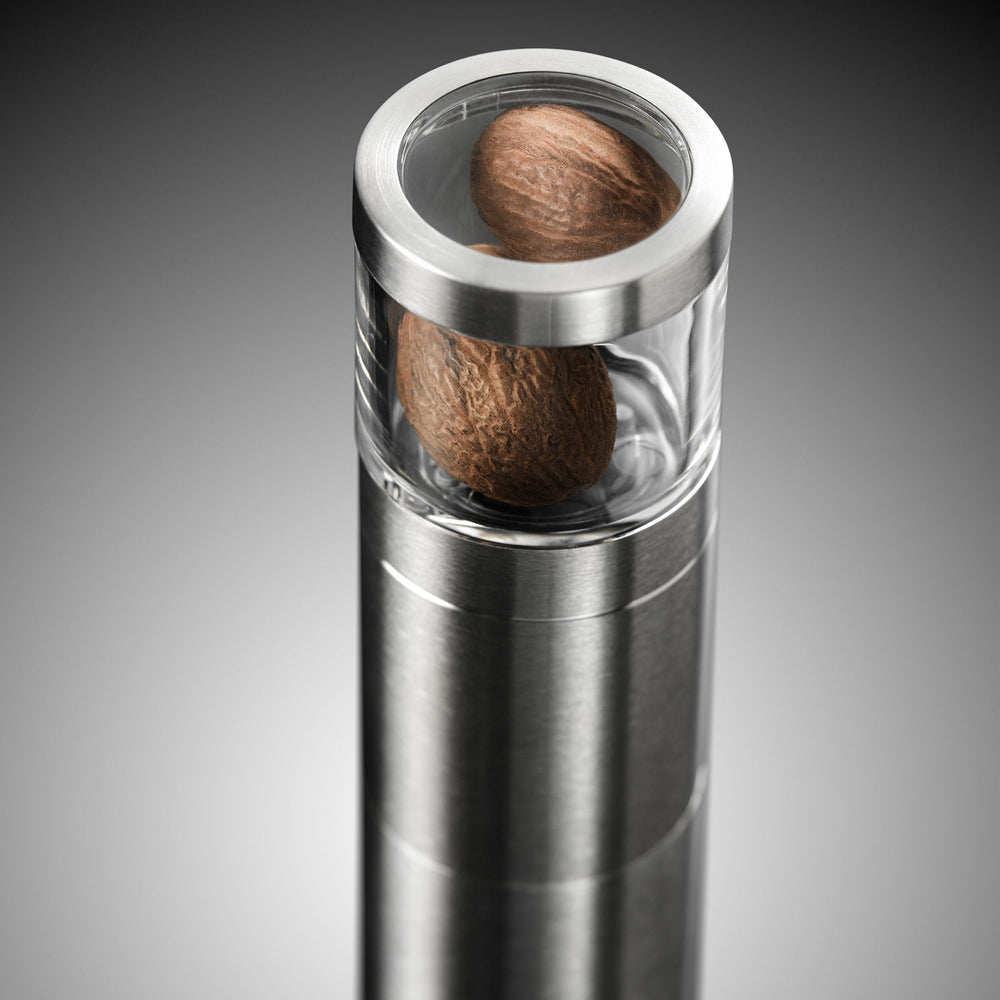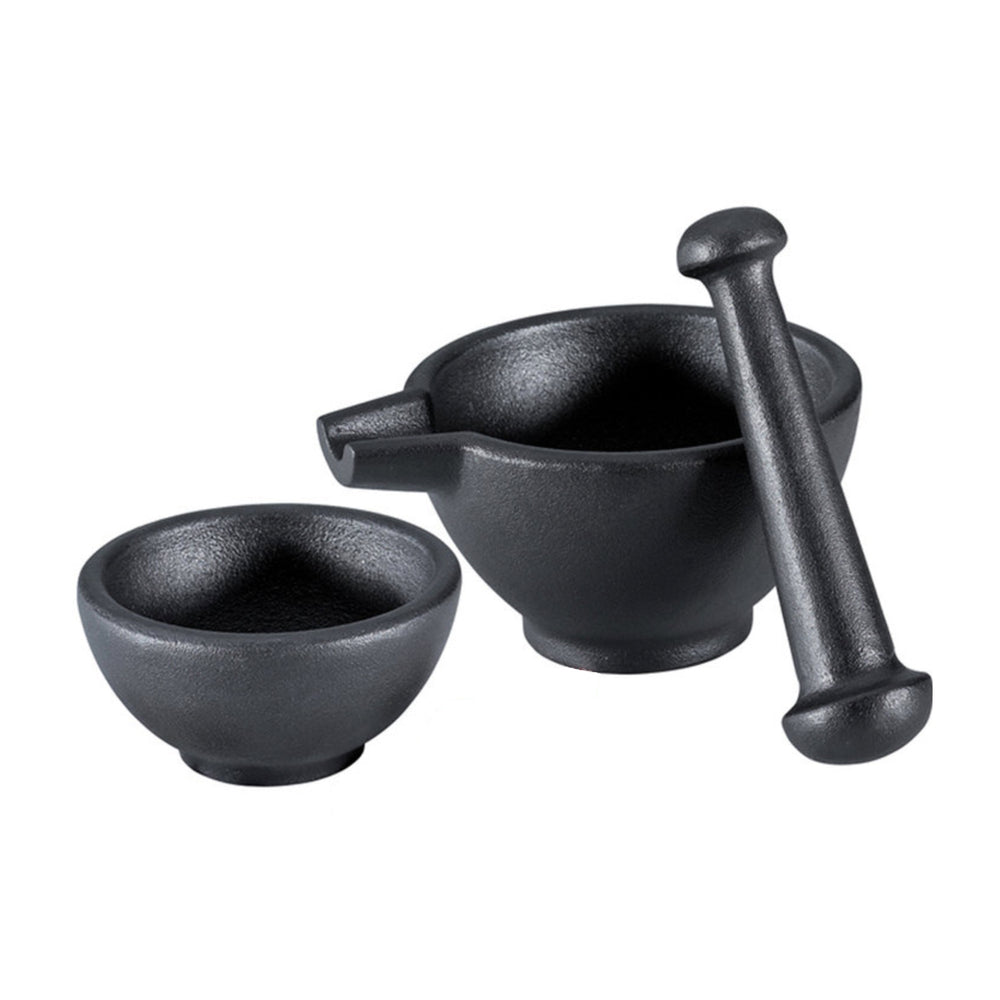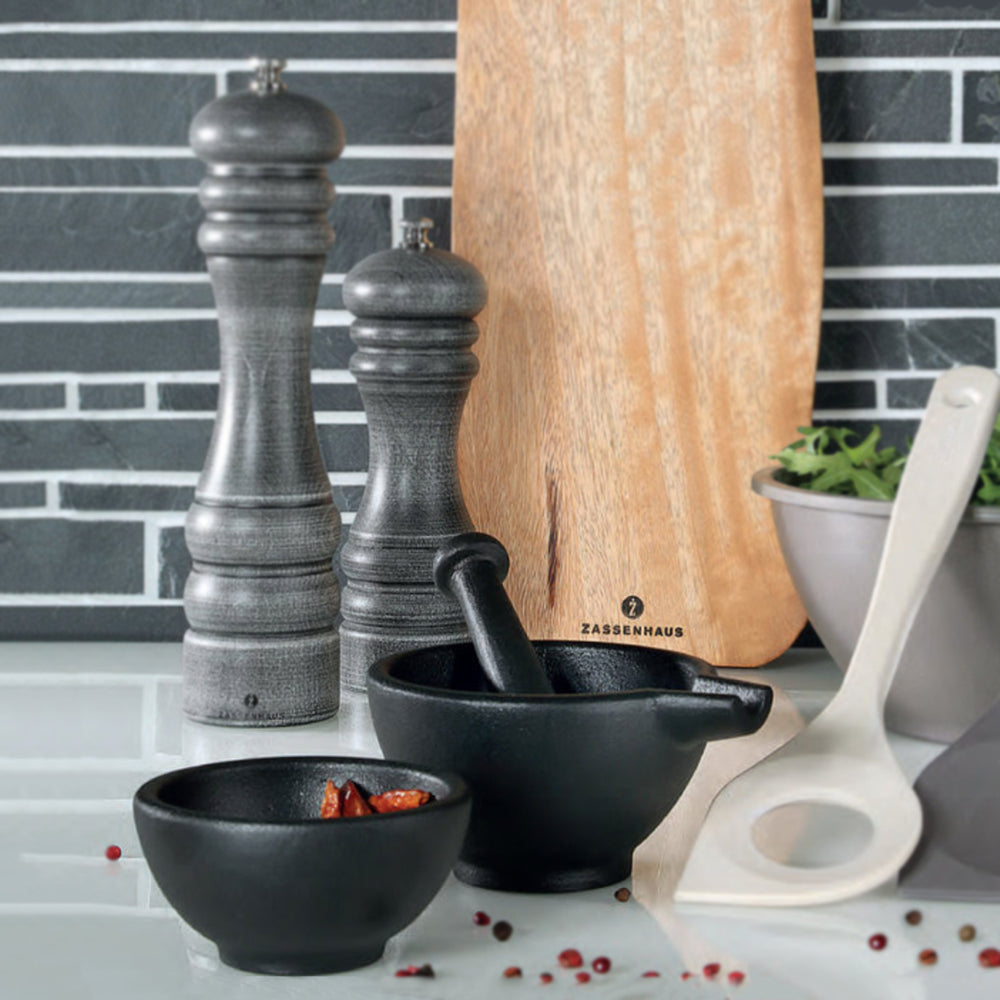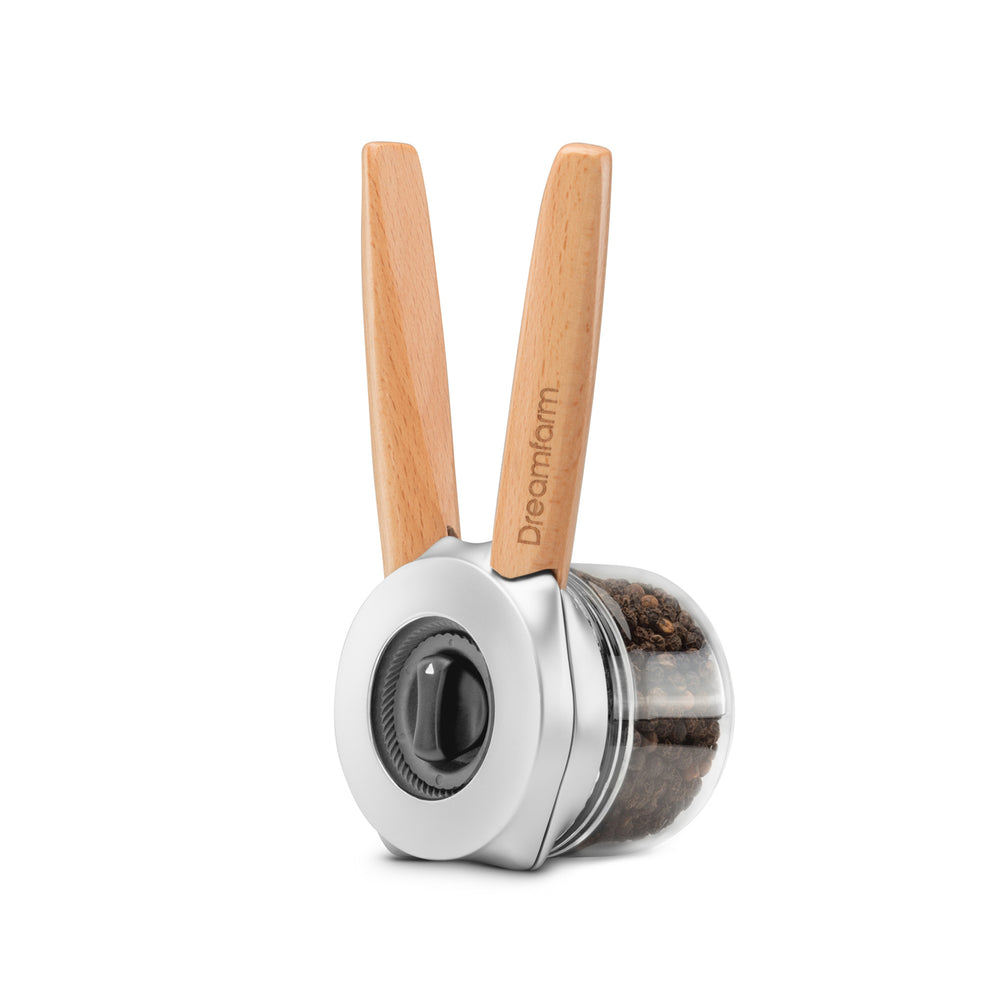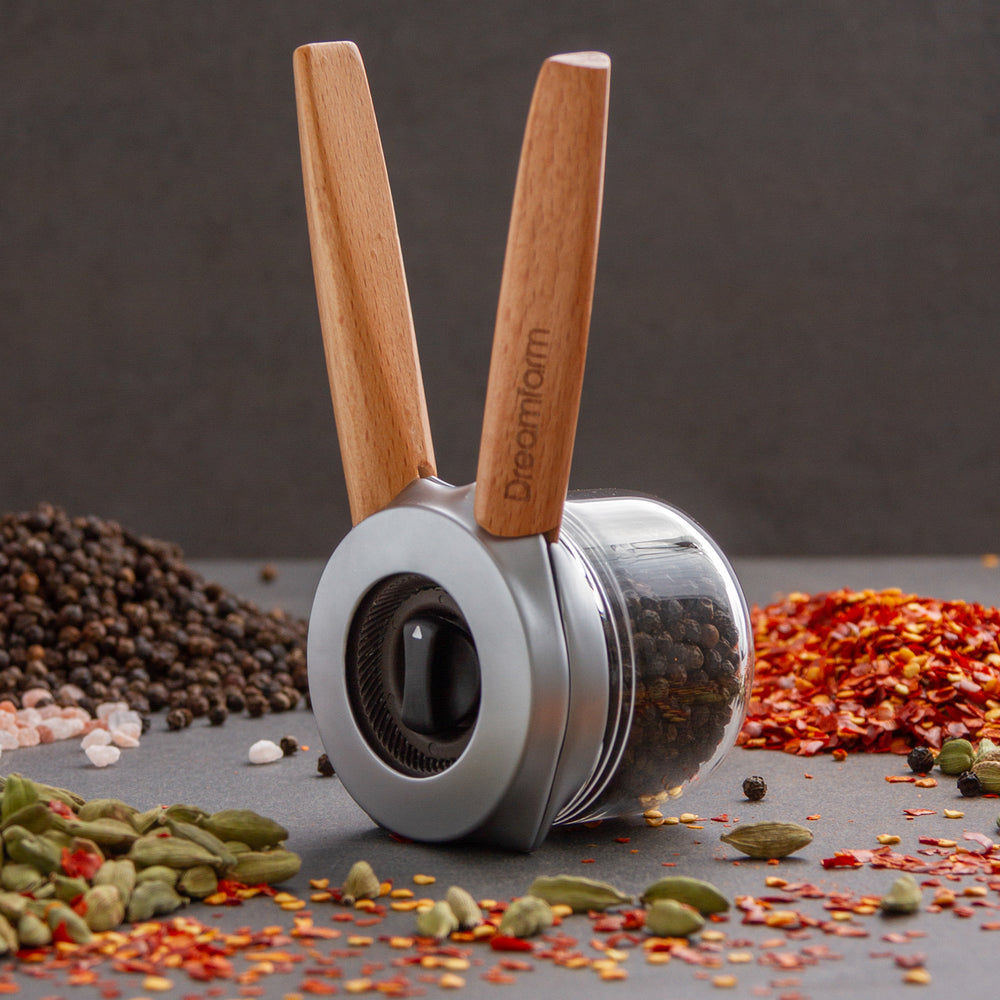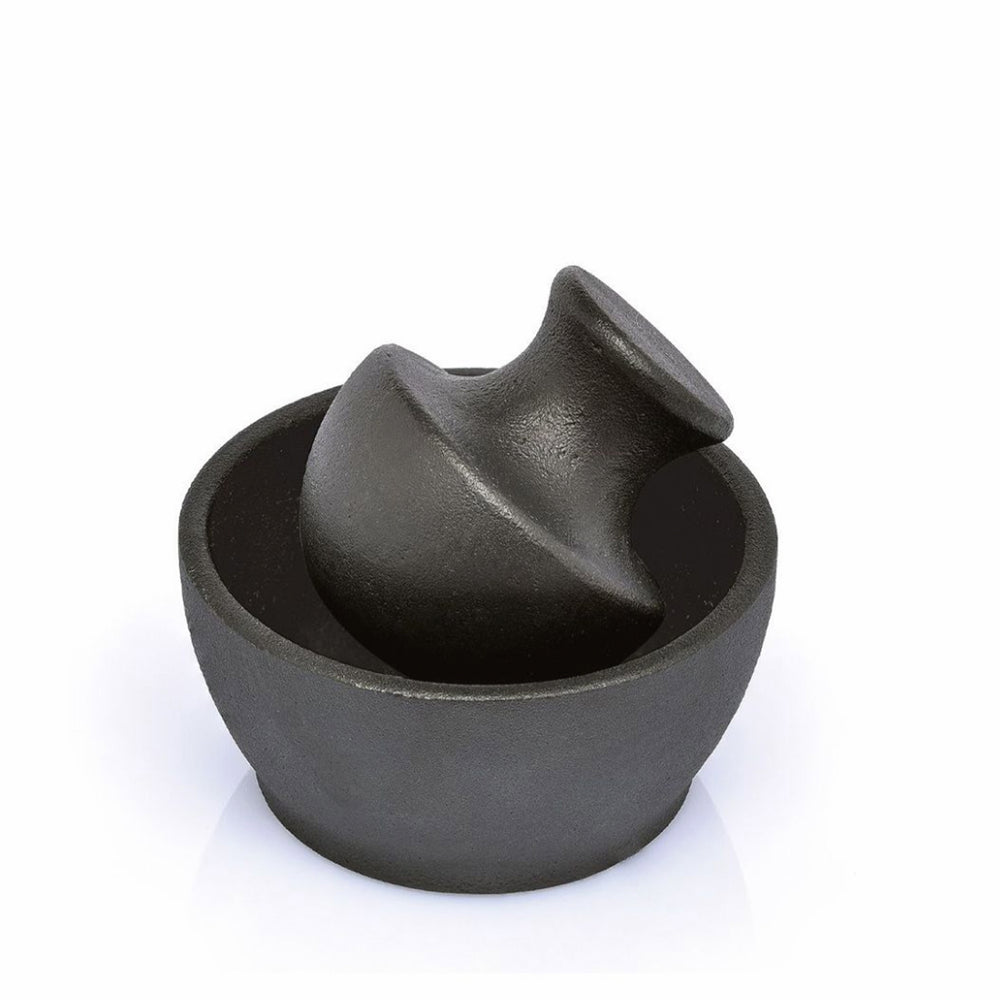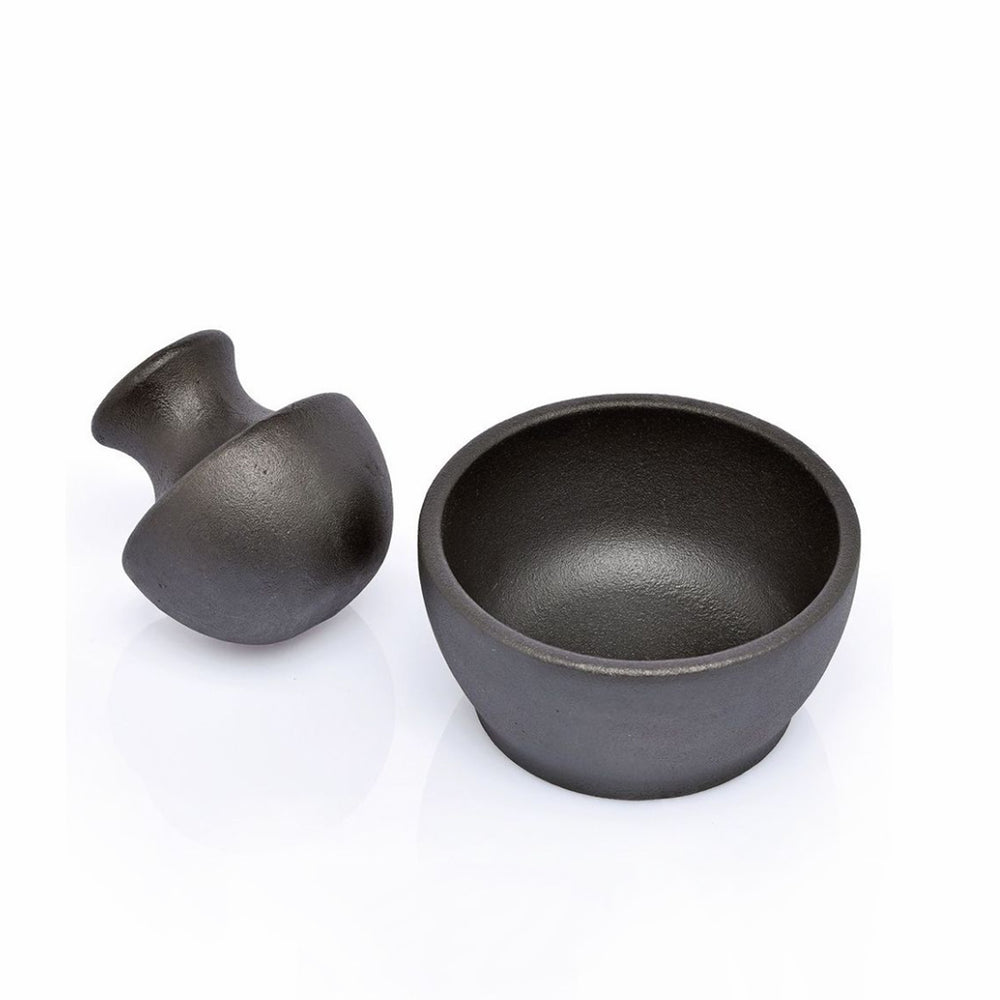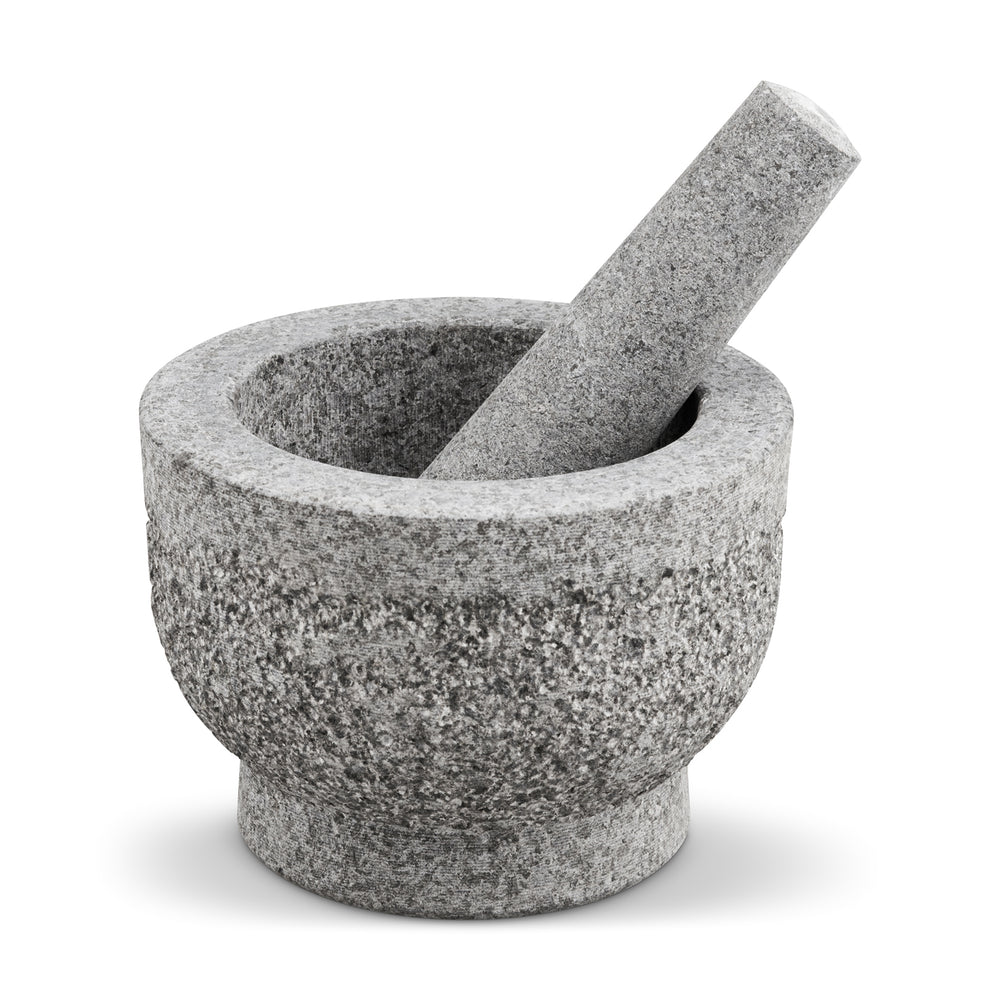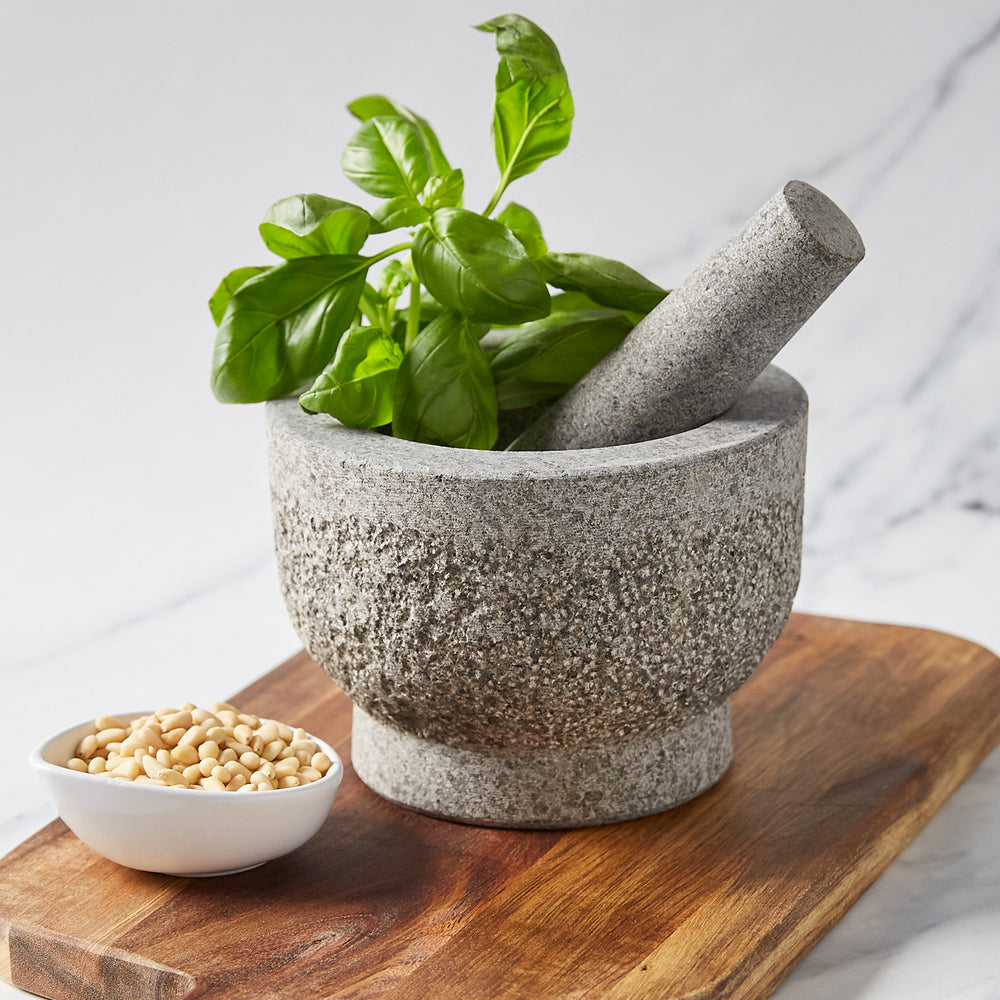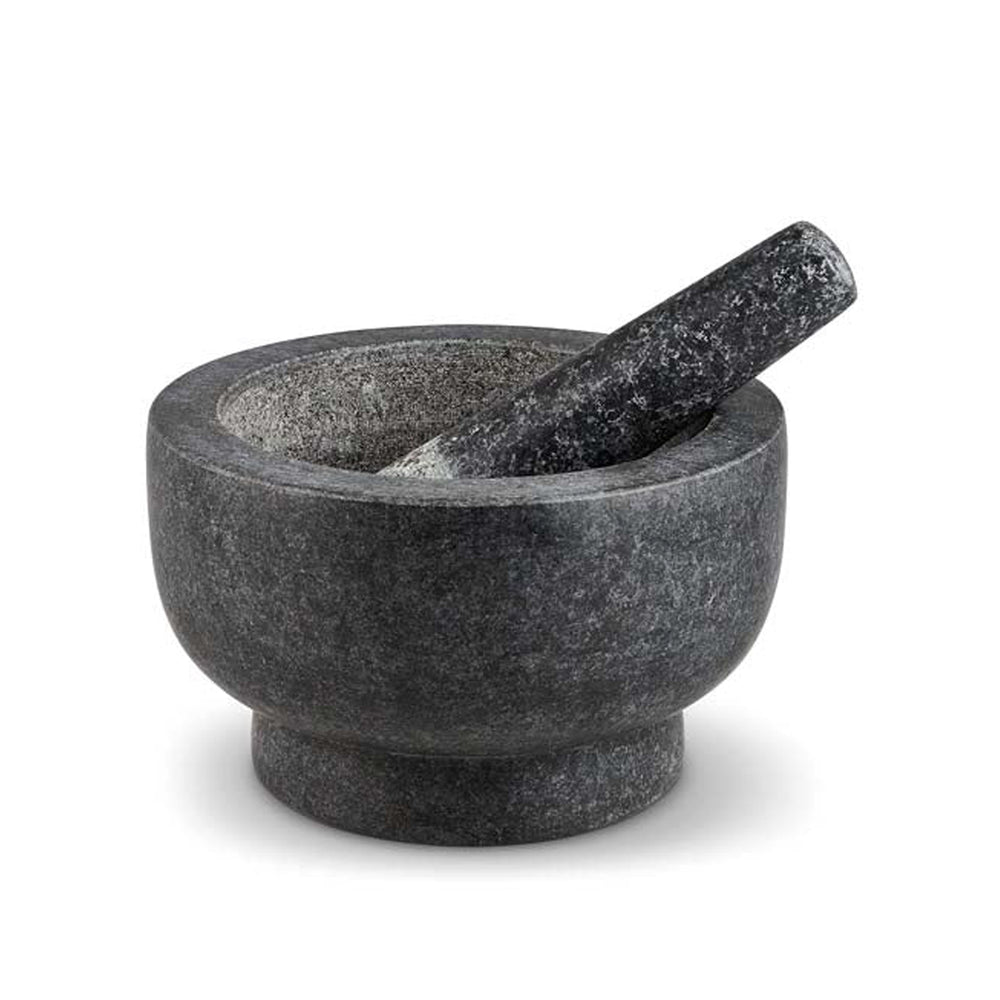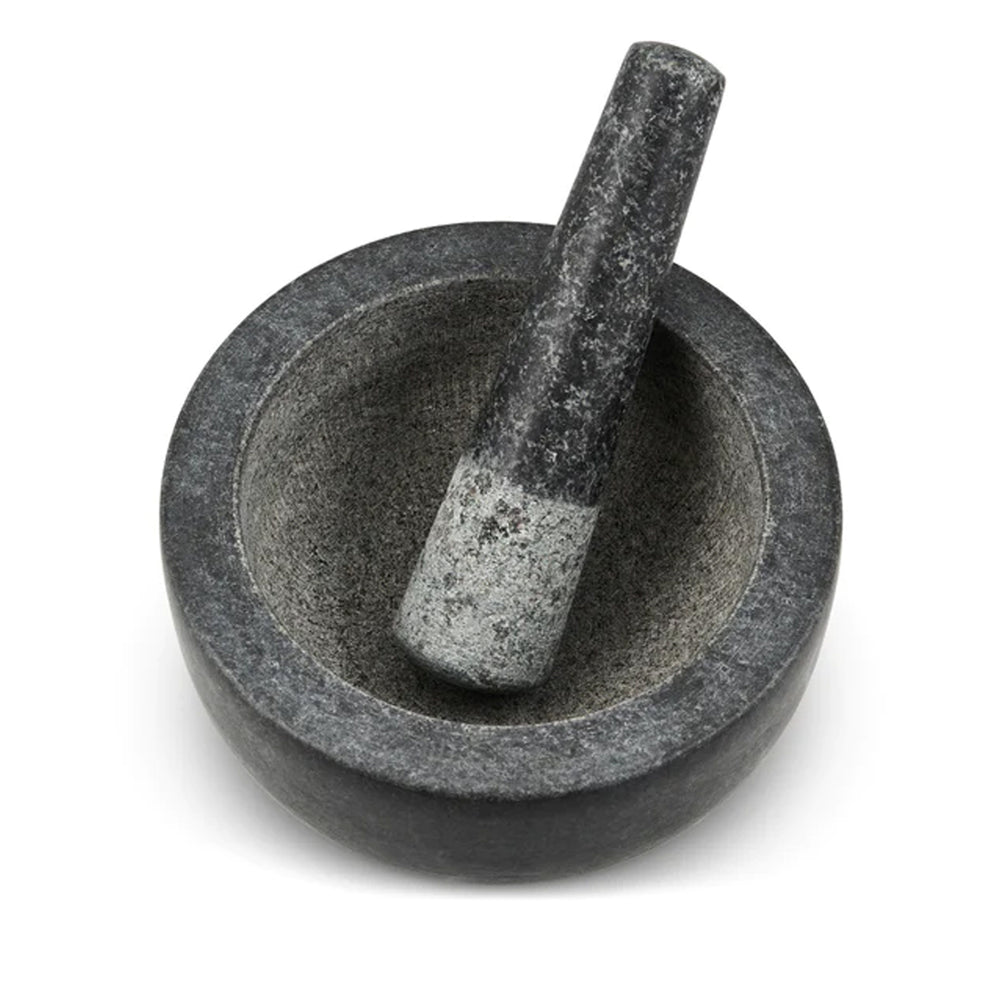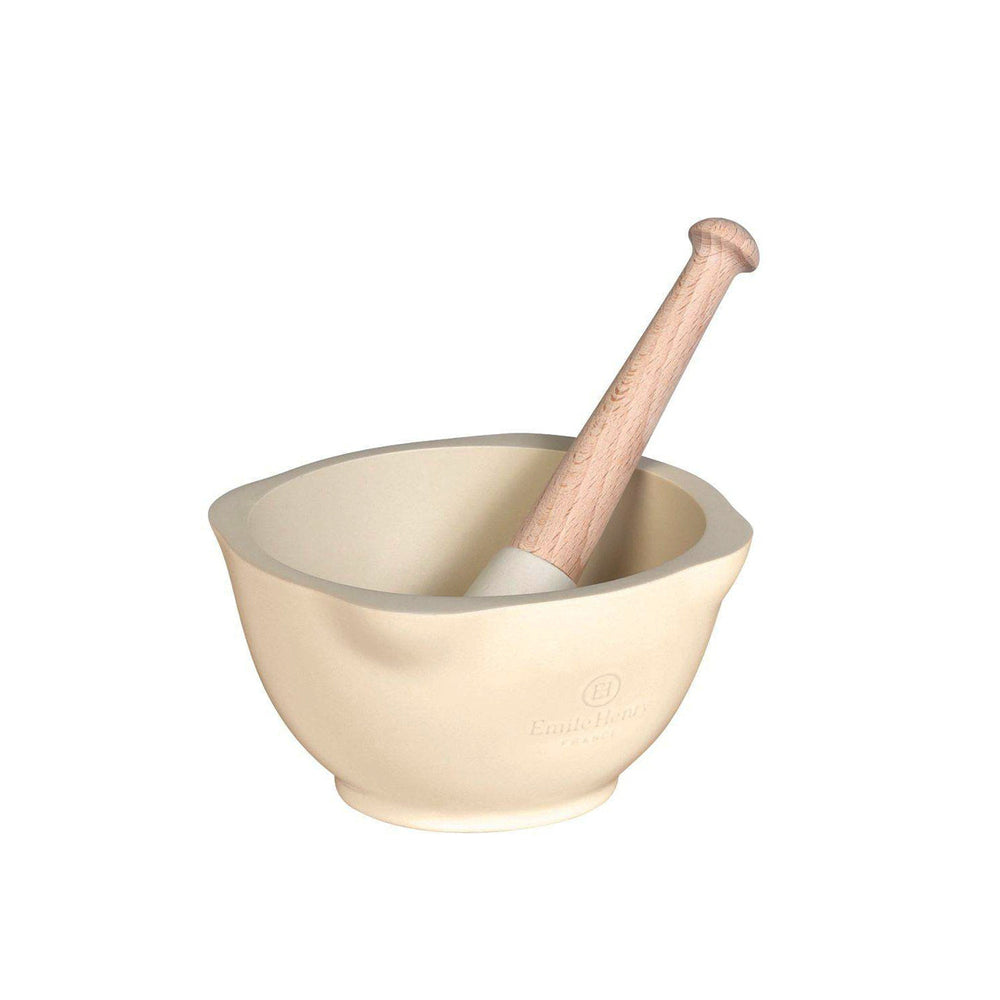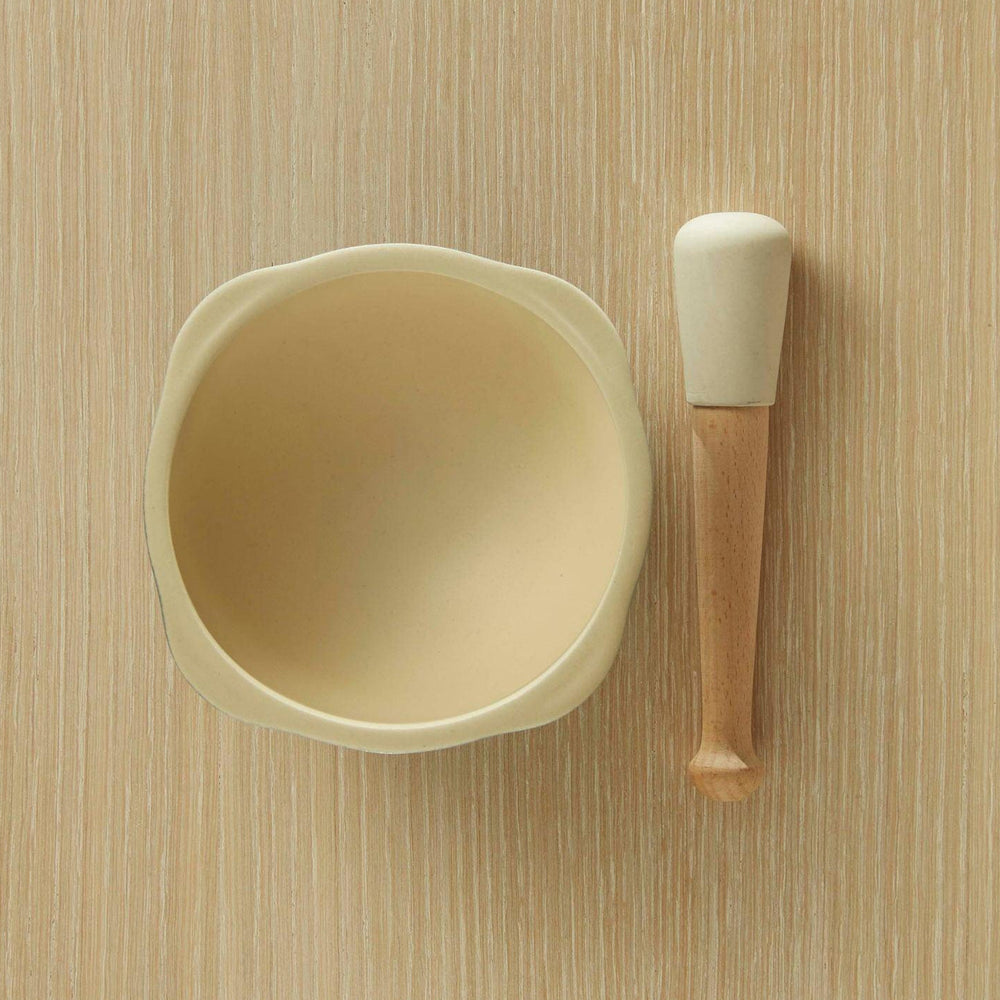If you love to cook, then there’s no doubt about it: You need a
pestle and mortar. (Or mortar and pestle – however you say it, this tool is essential.) Though it looks like something out of The Flintstones, this ancient gadget has been used by cooks consistently for the past 30,000 years, with zero changes to its basic club-and-bowl construction.
Why Use a Pestle & Mortar?
A pestle and mortar has the unique ability to bring flavour out of food by crushing (rather than cutting or grinding). What this relatively gentle technique does is:
A) Coaxes essential oils out of spices, garlic, ginger, herbs, and a myriad of other ingredients slowly, breaking down rigid cells more thoroughly than any other method
B) Keeps heat to an absolute minimum, which eliminates the bruising that occurs when chopping, due to contact with metal, or over-working that comes occurs when there’s too much heat (electric machines)
Translation? Brighter flavours in your curry pastes, creamier pestos and guacamoles, zestier chimichurri and other sauces, and so much more. In fact, since the primary use of pestle and mortars is to process key flavour-building ingredients like garlic, ginger, and spices, there’s no dish this tool cannot improve.
Its appeal does not lie in convenience, but in the pure, elemental act of getting the most flavour out of your ingredients.
A versatile small-medium granite pestle and mortar from Cole & Mason.
Which Is Mortar & Which Is Pestle?
This is a question people are too shy to ask, so we're making it clear here. The mortar is the bowl, and the pestle is the club. They should be of the same material in order to make sure that the pestle will not get damaged.
Best Material for a Pestle & Mortar
Due to the pestle and mortar’s enduring appeal, different versions of it exist all over the world, from Mexican molcajete, made of very coarse volcanic stone, to the small wine glass–shaped ebony mortar and pestles found in Mozambique. Every style of mortar and pestle matches the cuisine of the place it comes from – for example, the Japanese suribachi is made of ceramic with fine grooves throughout its interior, perfect for grinding small, oil-rich sesame seeds.
Since we at Borough Kitchen are London-based home cooks, we wanted to provide our customers with the most versatile options, ones suited to the widest swathe of cuisines. We also looked for types that meet our core values of function, quality and durability. After testing, we found the best, most versatile options were made of porcelain and granite with unpolished interiors, as the rougher texture allows for more friction.
While porcelain excels at some tasks better than granite, and vice versa, both materials do an excellent job of extracting flavour from ingredients – and are built to last a lifetime of use.
Granite vs. Porcelain Pestle & Mortars
Both
porcelain (or
ceramic) and
granite are hard-wearing and durable, which is key in a pestle and mortar as you are using brute force.
Both will complete all the tasks you throw at it with flying colours – but granite does some tasks better than porcelain, and vice versa.
There are two main considerations here: what you want to prepare in a pestle and mortar, and how much effort you want to put into cleaning it.
Left: MasterClass 20x12cm granite mortar and pestle. Right: Milton Brook ceramic (porcelain) mortar and pestle.
Granite pestle and mortars are much heavier than porcelain ones, and the texture is rougher. This means ingredients latch on to the mortar more effectively, and when the heavy, coarse pestle grinds against them, there is much more force and friction. This works well for tough ingredients like whole spices, as well as slippery ones like garlic, onion and ginger. If you plan on using a mortar and pestle to grind whole spices, make curry pastes, mix dips like guacamole or muhammara, then a granite mortar and pestle is the way to go.
Porcelain has a much finer texture than granite, making it excellent for oil-based emulsions like pesto, chimichurri, and salad dressings. It’s also excellent for tender ingredients like basil and pine nuts, which doesn’t need much force to release its flavour. The finer texture makes it resistant to staining and odours, making clean-up a breeze. You can even put it in the dishwasher (unless it includes wooden parts, which must be hand-washed). Emulsions also take longer to come together and require patience, and the lighter weight of a porcelain pestle makes the process much easier on your arm.
Our Verdict: A granite pestle and mortar will do a better job of grinding spices, making curry pastes, and mixing dips. Its heaviness means it will generally work quicker. But it is indeed very heavy, requires some effort to clean, and holds on to stains and odours longer than a porcelain mortar and pestle. A porcelain pestle and mortar will take longer, but will grind ingredients more finely and make sauces that are creamier and more uniform. It is also lighter and easier to clean.
Best Pestle & Mortar Size
Large pestle and mortars are crucial for making sauces, dips, and large quantities of spices (for a jar of homemade spice mix like garam masala or steak dry rub, for example). A small one simply won’t be able to handle the standard quantities most recipes require. A medium size might, but opting for a large pestle and mortar is the safest bet.
However, if you only plan to use a mortar and pestle for quickly grinding spices, crushing a handful of nuts, or a single-serving curry paste, a small or medium pestle and mortars – like this
3-piece iron pestle and mortar from Zassenhaus – will get the job done quicker and more thoroughly, and is much easier to store. (Iron is just as heavy as granite, so a fine material for the job.) Just as good, and far less messy, for small tasks are spice grinders, spice graters, and spice mills, but these only work for dry spices.
See our full collection of mortars, pestles, and spice grinders here.
The Zassenhaus Cast Iron Spice Grinder is a staff and customer favourite; shop here.
Our Verdict: A large pestle and mortar, plus a smaller spice grinder or similar tool for dry spices, is a dream team.
Our Best Pestle & Mortars
John Julian Porcelain Ball Pestle & Bowl Mortar
Beloved by cookbook legends Nigel Slater and Nigella Lawson, this pestle and mortar is a John Julian signature. Founder Julian Sainsbury learned how to make granite pestle and mortars by working with artisans in South India. When he launched John Julian, a Wiltshire-based company that offered both granite and porcelain versions, he dropped granite to keep production within the UK. What sets it apart is the design. A flat, wide pestle effectively crushes ingredients with a simple rocking motion, eliminating the need to lift (AKA a sore wrist), and the high sides of the bowl keep mess to a minimum.
Shop here; also available with a shallow mortar here.
Granite Pestle & Mortar
Granite is the traditional material used for larger pestle and mortars in Thailand and India. The larger size is key here, as spice mixes and curry pastes are made in larger batches before being stored as a concentrate. The sheer heft of it ensures that it stays stable on your countertop. The pestle is shaped like a tapered club, wider at the mixing end, which is great for both striking ingredients directly and grinding along the edge of the bowl. This piece is polished and smooth on the exterior of the mortar and the top half of the pestle, which makes it beautiful to display on your countertop when not in use. The interior is coarser than a porcelain finish, but relatively smooth compared to other granite models we tested (AKA effective but easier to clean).
Shop here.
Emile Henry Clay Pestle & Mortar
A simple and classic ceramic (also known as clay) pestle and mortar that’s been refined and fired at a higher temperature for durability, classifying it as porcelain. The non-porous, lightly textured finish makes it excel at smooth emulsions and sauces, and it effectively works with dry spices too (albeit with a bit more effort). The long pestle is partially made from beechwood, making it much lighter and easier to work with than standard pestles. The mortar includes a pouring spout – a nice touch. Like most porcelain, it resists odours and stains, making it easy to clean. In our opinion, it’s the best ceramic/porcelain mortar and pestle at the most affordable price point. We recommend the large or medium size, as it is ideal for sauces and liquid ingredients.
Shop here.
Cole & Mason Langley Pestle & Mortar
This extra-coarse pestle and mortar lends itself well to tough jobs like crushing hard spices and slippery garlic. A deep mortar with high sides ensures everything stays neat, and the small-medium size is versatile, whether you use it to crush a handful of toasted nuts for sprinkling over a salad or a small batch of curry paste, marinade, and more. It strikes a good balance of being heavy enough to sit stable on the counter, yet compact and light enough to easily transport to the sink for cleaning.
Shop here.
Zassenhaus Cast Iron 3 Piece Mortar and Pestle Set
A three-piece cast iron mortar and pestle set with two stackable mortars (200ml and 75ml) and one pestle. Due to the smaller size, we find this makes an excellent spice grinder.
Shop here.




